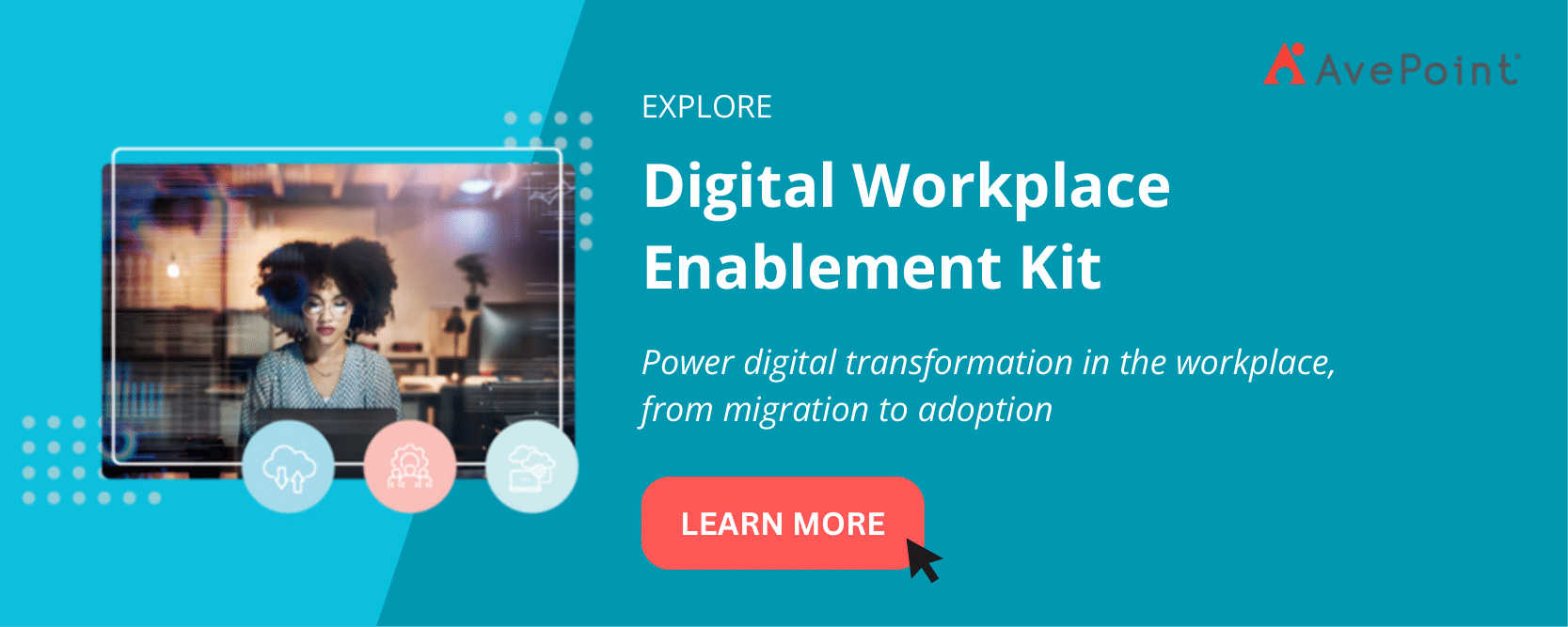As businesses undergo continuous evolution and adapt to the digital era, one undeniable truth emerges: the success of any digital transformation hinges on the workforce's adeptness at harnessing new technologies and workflows.
To equip your staff for the challenges and opportunities of the modern workplace requires training materials tailored to their needs.
However, the question arises: How can your training programmes keep pace with the rapid advancements in technology? The solution lies in utilising training content that remains perpetually relevant.
Our friends at AvePoint share some tried-and-tested strategies to ensure that your training content and programmes positively impact your employees - and contribute to your objectives of digital workplace enablement:
Driving effective workforce training programmes
The content of your training shapes the learning experiences of your employees and profoundly influences their ability to acquire fresh skills and knowledge. Nevertheless, not all training materials are created equal.
Relevant training content directly corresponds to the specific requirements of your workforce, enabling them to grasp how to apply newfound skills and knowledge to their tasks and contribute to the organisation's overall success.
Engaging training content is meticulously designed to foster active participation in the learning process. Yet, in today's swiftly changing technological landscape, relevance and engagement alone do not suffice—training content must also remain up-to-date to deliver enduring value.
Why continuous learning is paramount
By offering robust, easily digestible, and visually captivating training content that reinforces key concepts of modernisation in the workplace, businesses can empower their employees to develop skills essential for long-term success.
Three strategies for modernising training in the new world of work
Here are tried-and-tested strategies to ensure that your training content and programmes positively impact your employees and contribute to your objectives of digital workplace enablement:
1) Elevate your change management strategy:
Establishing a robust change management plan represents the pivotal initial step in ensuring the effectiveness of training programmes. A well-structured change management plan not only secures employee buy-in but also aids businesses in pinpointing their employees' precise needs and skill gaps during digital transformation endeavours.
Furthermore, businesses should communicate the impending changes effectively—clarifying what changes will occur, when and where they will transpire, the value they will bring, and who will be affected. Here's a valuable tip: To alleviate the strain of your internal campaign, leverage email templates and other customisable communication tools instead of creating everything from scratch.
2) Sustain the currency of training content:
Considering the breakneck pace of change in digital workplace modernisation, with new tools, methodologies, and practices introduced regularly, it's a formidable and impractical task for businesses to keep their training content constantly updated.
By offering Microsoft 365 Training, you can empower your workforce to better embrace and maximise Microsoft tools while alleviating the burden on L&D administrators and managers. It's essential to regularly update this training material to align with the latest Microsoft 365 releases. Furthermore, centralised course content eradicates content silos within departments or teams. With regularly updated training content, you ensure that users acquire the most current knowledge to harness their new digital workplace capabilities optimally.
3) Monitor and enhance training content:
Lastly, visibility into training completion and engagement rates is imperative. By scrutinizing and comprehending how employees interact with training content, businesses can glean invaluable insights into areas of friction and identify instances where employees may grapple with specific subjects or skills.
Armed with this information, your L&D team can develop supplementary training materials that bolster existing courses and aid employees in mastering the necessary skills. For instance, if the marketing team encounters difficulties with a particular use case, your L&D team can create targeted training content to help them surmount this obstacle. However, this tailored support is only possible when you possess the means to gauge engagement.
By tracking completion rates and engagement metrics, you ensure that your training program genuinely delivers value to both your employees and your organisation.
Empower your digital workforce
Digital workplace enablement transcends individual components such as data migration and correct placement on well-laid-out training portals. The adoption of the new digital workplace hinges on people and their readiness for fresh work methodologies, achieved through continuous training.
In today's swiftly evolving digital landscape, maintain your agility and innovation by instilling a culture of ongoing learning and development within your workforce.
More in Security Awareness Training
How AI tools could be leaking your company data.
Deliver personalised, relevant and adaptive training with minimal admin effort.
Join KnowBe4's Human Risk Summit.
Are your users' passwords any good?
All you need to know from acceptable use policy to cyber insurance.
Get the inside track from Forrester
Share this story






